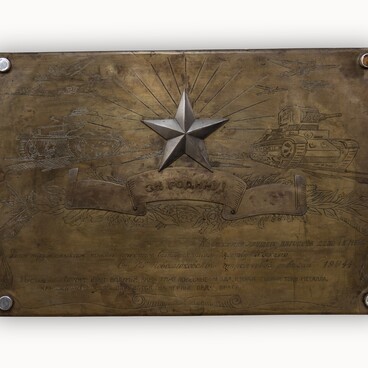The plow can be seen in images tracing back to the time of Babylon and ancient Egypt. Elements of ancient plows were found by scientists in peat bogs in Poland. In the first millennium BC, the plow already had an iron share — the edge for cutting a layer of earth from below.
The first metal horse plows appeared in the late 18th century, and their widescale production in the Russian Empire began in 1802. With the advent of tractors, tractor-drawn plows were invented. Their modern versions are still in use nowadays.
Even before the Great Patriotic War, Siberia was an important agricultural hub of the Soviet Union, and in the situation where a lot of fertile lands in Ukraine, Belarus, and western Russia could no longer be used, it became one of the main suppliers of bread, meat, and dairy products.
During the war, Siberia experienced an outflow of population from the countryside to the cities where they worked at industrial enterprises. An even greater number of village workers went to the front. By early 1944, the total number of employable collective farmers in the future Tyumen Region had decreased by over 40 percent compared to the pre-war period, and the corresponding number of men — by almost 70 percent.
The consequences of such difficulties ensued already during the first war year, when mainly women, elderly people, and teenagers remained at collective farms. Due to an acute shortage of equipment and horses, cows were used as draught animals. However, regardless of their occupation, all agricultural workers stood up to the test of war. Like everyone else, they abided by the motto “Everything for the front! Everything for the victory!” and worked tirelessly to fulfill their duty to their Fatherland.
The plow was one of the most important items in peasant agriculture during the war. In some regions, this tool was also known as a “sukha”. The plow displayed at the City Duma Museum originated from the village of Inderi, Vagaisky District, Tyumen Region. It consists of a runner, a share, a moldboard for lifting a layer of earth, a stilt for attaching the share and blade, and a handle. This plow was found by Rishat Khalitovich Rakhimov during an expedition in August 2002. He donated it to the museum.
The first metal horse plows appeared in the late 18th century, and their widescale production in the Russian Empire began in 1802. With the advent of tractors, tractor-drawn plows were invented. Their modern versions are still in use nowadays.
Even before the Great Patriotic War, Siberia was an important agricultural hub of the Soviet Union, and in the situation where a lot of fertile lands in Ukraine, Belarus, and western Russia could no longer be used, it became one of the main suppliers of bread, meat, and dairy products.
During the war, Siberia experienced an outflow of population from the countryside to the cities where they worked at industrial enterprises. An even greater number of village workers went to the front. By early 1944, the total number of employable collective farmers in the future Tyumen Region had decreased by over 40 percent compared to the pre-war period, and the corresponding number of men — by almost 70 percent.
The consequences of such difficulties ensued already during the first war year, when mainly women, elderly people, and teenagers remained at collective farms. Due to an acute shortage of equipment and horses, cows were used as draught animals. However, regardless of their occupation, all agricultural workers stood up to the test of war. Like everyone else, they abided by the motto “Everything for the front! Everything for the victory!” and worked tirelessly to fulfill their duty to their Fatherland.
The plow was one of the most important items in peasant agriculture during the war. In some regions, this tool was also known as a “sukha”. The plow displayed at the City Duma Museum originated from the village of Inderi, Vagaisky District, Tyumen Region. It consists of a runner, a share, a moldboard for lifting a layer of earth, a stilt for attaching the share and blade, and a handle. This plow was found by Rishat Khalitovich Rakhimov during an expedition in August 2002. He donated it to the museum.



